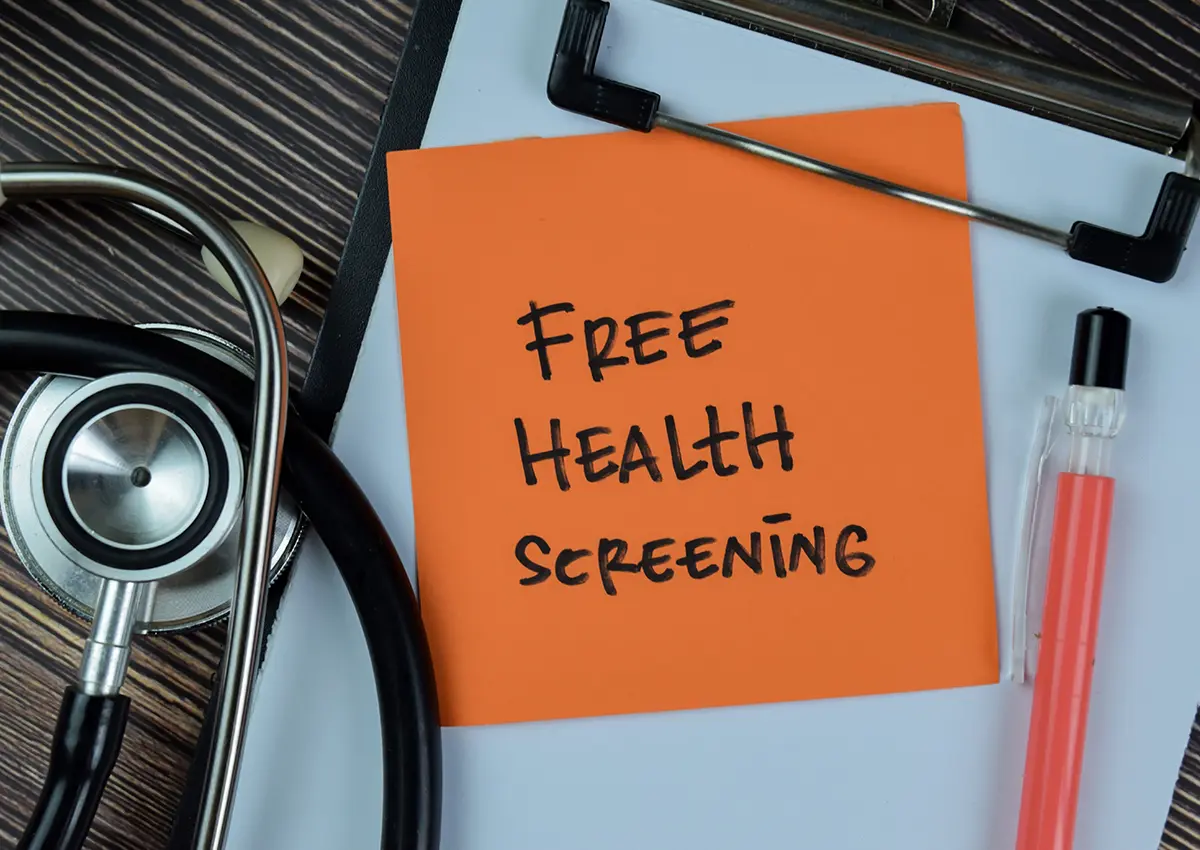Beyond GLP-1 medicines: the path to successful and long-term weight loss
We are in a new era of obesity treatment. GLP-1-based medicines have transformed the landscape – but real success is achieved when medication becomes part of a comprehensive approach that supports the whole person.
Long-term health and weight loss require more than medicine alone. It is when medical treatment is combined with lifestyle change and continuous guidance that meaningful, lasting progress becomes possible (1–2).

A new era in the treatment of overweight
GLP-1 medicines have revolutionised the treatment of obesity, giving people around the world a new tool for weight loss. These medicines work in part by reducing appetite, increasing satiety and slowing gastric emptying, which helps you eat fewer calories and lose weight in a healthy way (1,2).
But long-term success requires more – including follow-up, support and understanding of how the body changes. At Yazen, GLP-1 treatment is therefore combined with behavioural support and technology to create sustainable results and improved health.
Follow-up – the key to safety and success
Why BMI alone is not enough
Weight loss is often assessed using BMI (Body Mass Index) to estimate health risks and ideal weight. BMI is calculated by dividing weight in kilograms by height in metres squared. It is used in healthcare as an initial screening tool to identify overweight and obesity, and to determine whether further assessment may be needed. On a population level, BMI is strongly associated with the risk of conditions such as cardiovascular disease, type 2 diabetes, high blood pressure and certain cancers.
However, for the individual, BMI is a fairly blunt instrument. It is often used to categorise weight status, but it does not take into account important factors such as body composition or where fat is distributed on the body (3).
In other words, two people with the same BMI can have completely different health statuses. A person with a lot of muscle mass may have a high BMI without unhealthy levels of body fat. At the same time, someone with a normal BMI might have a body composition with a high proportion of fat in the wrong places — for example abdominal fat — which increases the risk of disease.
How Yazen works with real-time data
Yazen uses medically validated scales from Withings Health Solutions, which send data directly to our clinical team. This enables:
- adjustment of doses and exercise recommendations
- early detection of muscle loss
- better individualised guidance to optimise weight loss and health
Follow-up – the core of GLP-1 treatment
As GLP-1 medicines become increasingly common, it is clear that sustainable results require more than medication alone. To support people living with overweight and obesity in the long term, regular monitoring, guidance in lifestyle changes and qualified medical support are essential — alongside medication.
At Yazen, follow-up is a central part of care. Our patients can access Withings smart, connected scales right from the start. By tracking weight, body composition and other health markers in real time, the clinical team can quickly identify when weight loss plateaus or when treatment adjustments are needed.
This continuous feedback helps maintain motivation, build healthy habits and prevent setbacks.
Strengthen motivation through self-monitoring
Tracking your own progress is a powerful driver in lifestyle change. Research shows that self-monitoring — such as following your activity and goals — is important for successful weight loss and improved health (4).
This is why Yazen uses digital tools from Withings that make monitoring simple and motivating. The scales provide immediate feedback and help users build new habits step by step, with accessible and continuous support from Yazen’s clinical team throughout the journey.
From weight to health – a holistic perspective
Obesity often affects more aspects of health than weight alone — such as blood pressure, sleep and blood glucose. By including digital follow-up across several parameters, Yazen can provide care tailored specifically to you and help prevent complications. It is important to understand that weight loss is not only about reducing weight, but also about improving overall health and lowering the risk of disease.
The importance of balance between fat and muscle
With GLP-1 medicines, weight loss can often be both rapid and effective. But in a calorie deficit, the body breaks down both fat and muscle. Without sufficient physical activity and adequate protein intake, there is a risk that too much muscle mass will be lost in relation to fat mass.
Both fat tissue and muscle have vital functions. Fat tissue stores energy, protects organs and produces hormones. Muscles contribute to energy metabolism, blood glucose regulation, immune function, and are essential for movement.
If fat mass becomes too high — especially abdominal fat — a state of low-grade inflammation can develop, increasing the risk of type 2 diabetes, cardiovascular disease and strain-related injuries to joints and bones. If muscle mass becomes too low, energy expenditure decreases, making it more difficult to maintain a new weight in the long term (2).
Healthy weight with GLP-1 and lifestyle changes
Achieving weight loss often requires a combination of medical treatment, dietary changes and increased physical activity. Medicines work best when they are used alongside healthy eating habits and regular exercise (1,2).
Diet for healthy weight
Weight loss requires a calorie deficit — meaning that energy intake must be lower than energy expenditure. Medical treatment can support this by increasing satiety and reducing hunger. With reduced energy intake, it is important that the diet remains nutrient-dense to meet the body’s needs for vitamins, minerals and protein.
Adequate protein intake supports satiety, the preservation of muscle mass and improved body composition, particularly when combined with strength training. Dietary advice should always be individualised based on a person’s eating habits, preferences and circumstances (2).
Regular physical activity
Physical activity is a central part of weight-loss treatment. It enhances the effect of medication, improves metabolism and wellbeing, and reduces the risk of side effects and related diseases.
Recommended forms of physical activity (5):
- Everyday movement: take the stairs, walk or cycle
- Cardiovascular activity: for example brisk walking, swimming or cycling
- Strength training: 2–3 times per week to preserve muscle mass and support metabolism
Exercise should be adapted to the individual’s abilities, health status and goals.
Sleep
Adequate sleep is essential for healthy weight regulation. Poor sleep disrupts the hormonal systems that regulate appetite, satiety and energy balance, which can make weight loss more difficult (6).
Stress
Chronic stress increases cortisol levels and can negatively affect hunger, metabolism and recovery. The experience of stress varies between individuals, which means support and treatment must be tailored (7).
Examples of habits that support weight loss
- Eat regular meals
- Limit sugar and processed foods
- Drink water to quench thirst and reduce sugary drinks and alcohol
- Move at least 30 minutes per day, preferably more
- Ensure sufficient sleep and manage stress in healthy ways
Who may be eligible for GLP-1 treatment?
Medical treatment with GLP-1 medicines is often appropriate for people with a BMI of 30 or higher, or a BMI of 27 together with other conditions such as type 2 diabetes or high blood pressure. It is important that treatment takes place under medical supervision and forms part of a holistic plan that includes lifestyle changes (2).
Some patients — especially older adults or those with multiple health conditions — receive tailored treatment to ensure the best possible outcomes. There are also different medicines within the GLP-1 class that can be selected depending on the patient’s needs.
Risks and medical monitoring
It is important to understand that medical treatment for weight loss is not a miracle cure but a tool that should be used together with lifestyle change. Some people may experience side effects such as nausea or gastrointestinal discomfort, which is why treatment should always be monitored by a doctor.
Purchasing medicines independently without medical supervision can pose serious risks, including incorrect substances, incorrect dosage or unknown side effects. Patients should therefore always receive treatment through licensed healthcare professionals.
Finding the right support and guidance
To succeed with weight loss, it is important to find an approach that works for you. Digital tools and apps can help you track your progress and stay motivated. At Yazen, you receive personal coaching from doctors, dietitians and trainers who support you in making sustainable lifestyle changes.By combining medical treatment with accessible and continuous support, you can lose weight while also reducing the risk of other health conditions. It is equally important that you feel confident and have your questions answered throughout the entire process.
References
- Bergmann, N. C., Davies, M. J., Lingvay, I., & Knop, F. K. (2023). Semaglutide for the treatment of overweight and obesity: A review. Diabetes, Obesity and Metabolism, 25(1), 18–35. https://doi.org/10.1111/dom.14863
- Koskinas, K. C., Van Craenenbroeck, E. M., Antoniades, C., Blüher, M., Gorter, T. M., Hanssen, H., Marx, N., McDonagh, T. A., Mingrone, G., Rosengren, A., Prescott, E. B., & the ESC Scientific Document Group. (2024). Obesity and cardiovascular disease: An ESC clinical consensus statement. European Heart Journal, 45(38), 4063–4098. https://doi.org/10.1093/eurheartj/ehae508
- Losev, V., Lu, C., Tahasildar, S., Senevirathne, D. S., Inglese, P., Bai, W., King, A. P., Shah, M., de Marvao, A., & O’Regan, D. P. (2025). Sex-specific body fat distribution predicts cardiovascular ageing. European Heart Journal. Advance online publication. https://doi.org/10.1093/eurheartj/ehaf553
- Samdal, G. B., Eide, G. E., Barth, T., Williams, G., & Meland, E. (2017). Effective behaviour change techniques for physical activity and healthy eating in overweight and obese adults: Systematic review and meta-regression analyses. International Journal of Behavioral Nutrition and Physical Activity, 14(1), 42. https://pubmed.ncbi.nlm.nih.gov/28351367/
- World Health Organization (WHO). (2020). Guidelines on physical activity and sedentary behaviour. Geneva: World Health Organization. Retrieved from https://www.who.int/news-room/fact-sheets/detail/physical-activity
- Chaput JP, McHill AW, Cox RC, Broussard JL, Dutil C, da Costa BGG, Sampasa-Kanyinga H, Wright KP Jr. The role of insufficient sleep and circadian misalignment in obesity. Nat Rev Endocrinol. 2023 Feb;19(2):82-97. doi: 10.1038/s41574-022-00747-7. Epub 2022 Oct 24. PMID: 36280789; PMCID: PMC9590398.
- Lengton, R., Schoenmakers, M., Penninx, B. W. J. H., Boon, M. R., & van Rossum, E. F. C. (2025). Glucocorticoids and HPA axis regulation in the stress–obesity connection: A comprehensive overview of biological, physiological and behavioural dimensions. Psychoneuroendocrinology. https://pubmed.ncbi.nlm.nih.gov/39623561/

November 19, 2025
November 28, 2025
Start your weight loss journey with Yazen today
Everything you need to do is to create an account and answer some questions about your health
.svg)
.svg)




.svg)







